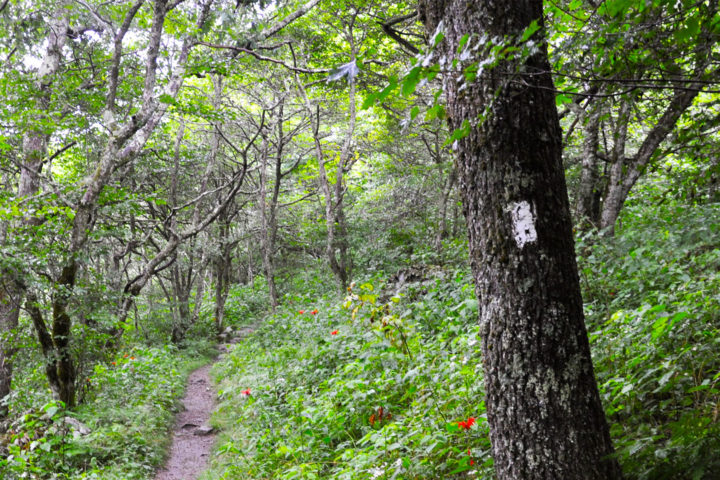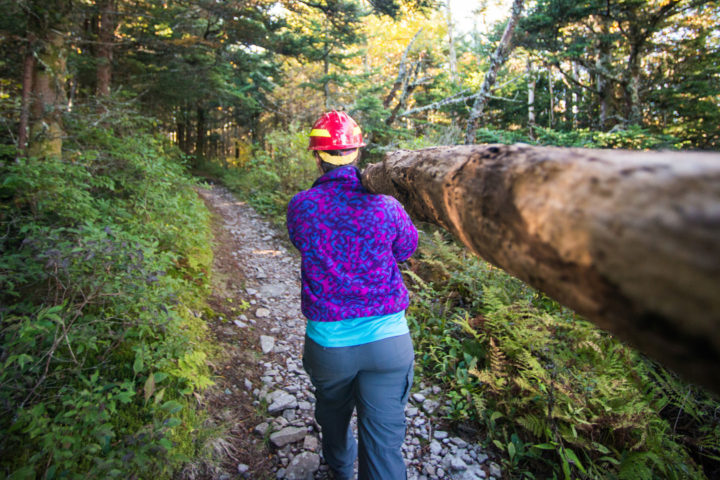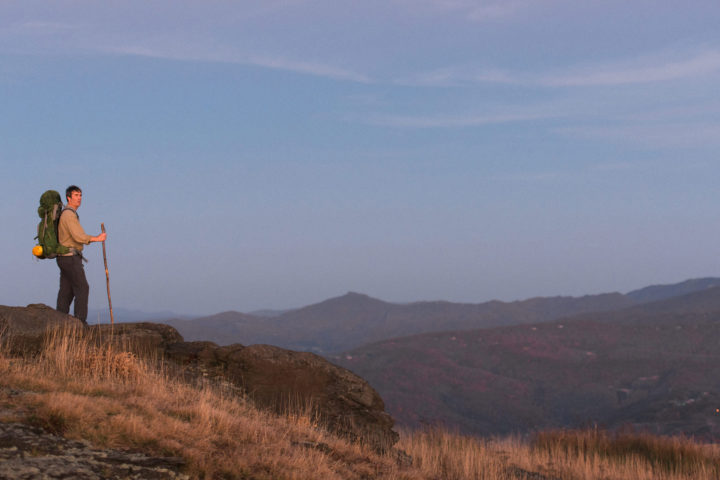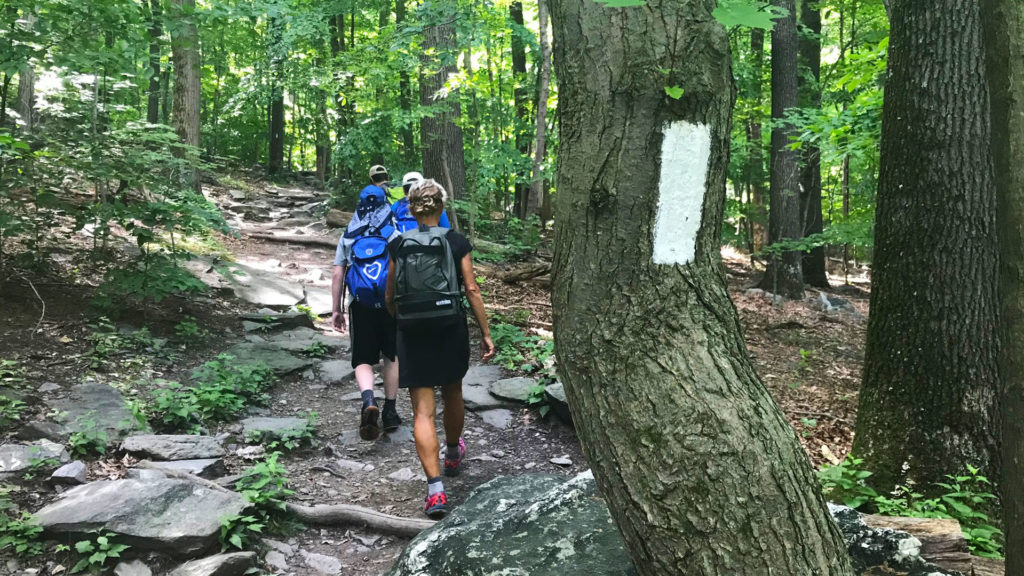Responding to COVID-19
A Reminder to Stay Safe on the A.T.
July 31, 2020
The response to COVID-19 is constantly evolving throughout the world, and the ATC is frequently updating its guidance and listings of Trail-related closures and travel restrictions. To make sure you have the most up-to-date information, please visit appalachiantrail.org/covid19.
If there is one theme underscoring the first half of 2020, it is that the Appalachian Trail (A.T.) is not a separate reality from the rest of the world. The COVID-19 pandemic in particular has impacted the A.T. and the broader Trail community in various and profound ways.
This theme continues into the summer. Thousands are heading outdoors to places like the A.T. to take advantage of the warm weather. However, the prospect of adventure, unfortunately, comes with heightened risk. The number of new COVID-19 cases is rising or staying at elevated levels in multiple Trail states, and the risk associated with these rising cases means even a simple walk in the woods requires additional caution and consideration. Mandatory quarantines in several Trail states will likely be in effect for at least the near future.
Given the continued persistence and pervasiveness of new COVID-19 cases along the A.T. corridor, we urge all hikers to review the following safety guidelines and incorporate them into their A.T. hiking plans:
First, before you decide to head out, ask yourself the following questions:
- Are you, or anyone in your group, exhibiting symptoms of COVID-19, or have you been in contact with someone diagnosed with COVID-19?
- Is there an official closure of the section of the A.T. you are planning to hike?
- Are you planning an A.T. hike in a state in which you do not reside that has an out-of-state visitor quarantine?
- Are you, or anyone in your group, missing any essential gear to not only have a safe and healthy hike but also mitigate the spread or contraction of COVID-19?
If the answer to any of these questions is YES, we ask that you revise your plans or stay home.
If the answer to all of these questions is NO, we recommend the following:
Be Self-Sufficient:
- In addition to the ten hiker essentials, carry a CDC-approved mask and alcohol-based hand sanitizer.
- Practice social distancing; if not possible — such as when passing someone on the Trail — make sure you are wearing a mask to help protect not only yourself, but also those around you.
- As this virus can remain on hard surfaces for significant periods of time — potentially days — we advise not using Trail resources like shelters, privies, or picnic tables. If you come into contact with hard surfaces, either wash your hands (if possible) or use hand sanitizer.
- Pack a trowel so you can dig catholes (70 adult steps from the Trail, campsites, and water sources; carry out toilet paper) instead of using privies on the Trail.
- For overnight trips, use a tent or other personal shelter and carry a bear canister to avoid using a bear box, cables, or pole — these are potential surfaces where COVID-19 could remain, and a personal shelter provides social distancing.
- Treat your hike like a true backcountry experience that is not reliant on A.T. facilities you would otherwise use.
Stay Local:
- Hike close to home — ensure you do not have to stop for gas or meals along the way. This reduces opportunities to come into contact with others in towns, where the spread of COVID-19 is more likely.
- Check the ATC COVID-19 Closures page on our website before heading out, as the section of the Trail you are planning to visit may have special restrictions in place, such as shelter and privy closures or camping bans.
Stay Small:
- Hike only with members of your immediate household or in groups smaller than six people — crowding poses one of the greatest challenges for social distancing and, as a result, the most significant risk for spreading COVID-19.
- Avoid well-known locations where there will likely be many visitors.
- Avoid accessing the Trail during high traffic periods (weekends, holidays, etc.).
- Have a backup plan in case the trailhead you have chosen is crowded when you arrive. If trailheads are full, turn back and return when crowds have dispersed.
- Do not park in undesignated areas or block roads or gates.
Be Prepared:
- Carry a physical map of the area where you are hiking and share your plans with someone you know in case you need assistance.
- Review Leave No Trace principles on our website so you can leave the Trail better than you found it.
- Know current Trail conditions before you head out — check our Trail Updates page for the section you plan to hike and be aware of the weather forecast.
- Being prepared not only protects you and the Trail — it protects your fellow hikers and, should you become lost or injured, the search and rescue teams that would use their limited resources to assist you.
Be Respectful:
- If it is essential for you to head into town on your trip, wear a mask and use hand sanitizer or wash your hands with soap frequently.
- Contact businesses and service providers in advance to make sure they are open.
- Always follow local safety guidelines.
- Minimize the amount of time you spend in town.
- If you become ill on the Trail, particularly if you exhibit any symptoms associated with COVID-19, leave the Trail and seek medical attention as soon as possible.
Be Patient:
- There are still restrictions on multiple sections of the Trail — know what they are before setting out on your hike.
- Over 100 shelters are still closed and certain Trail facilities may not be open to public use.
- As of today, multiple Trail states — Pennsylvania, New Jersey, New York, Connecticut, Massachusetts, Vermont, New Hampshire and Maine — have required or recommended 14-day quarantines upon entering, though some of these states have exemptions for visitors who have tested negative for COVID-19. Visit our closures page for more information.
- Massachusetts currently has a complete camping ban.
- As cases of COVID-19 continue to rise throughout the U.S., conditions could potentially change quickly. Be aware of cases reported in the counties where you plan to hike in order to make an informed decision that will protect you and remote communities.
We continue to be grateful to everyone who has taken extra steps to help prevent the potential spread of the virus, both on the A.T. and beyond. We remain hopeful that conditions will improve in the future, and we will continue to provide updates as they become available.
Wishing you safety and health,
The Appalachian Trail Conservancy Team
For up-to-date information on closures, special regulations and hiking safety guidance during the COVID-19 pandemic, click below or visit appalachiantrail.org/covid-19.
Discover More

Stay Safe and Healthy
Responding to COVID-19
Learn how ATC is working to help mitigate the spread of COVID-19 on the Appalachian Trail.

Stay Informed
Latest News
Read the latest news and updates about the Appalachian Trail and our work to protect it.

ATC's Official Blog
A.T. Footpath
Learn more about ATC's work and the community of dreamers and doers protecting and celebrating the Appalachian Trail.


